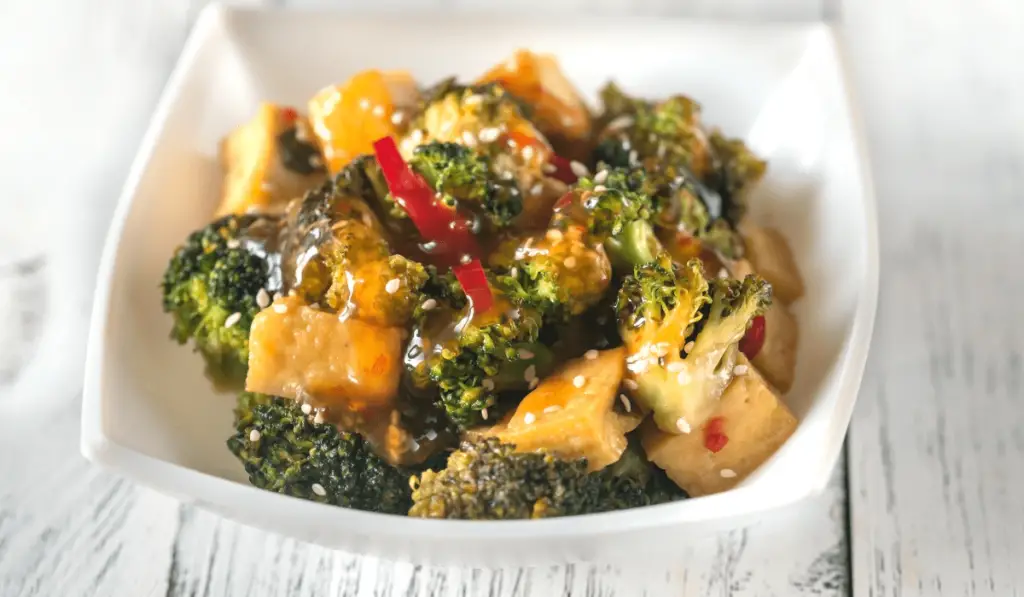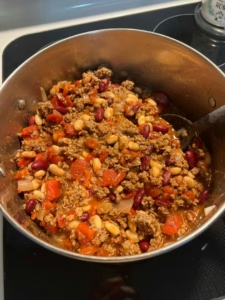My palate has been graced by numerous flavors, but nothing compares to this peanut stir fry sauce. Its rich taste compels me to make twice the quantity, ensuring I have a lavish amount to complement my rice.

Introduction: Embracing the Richness of Peanut Stir Fry Sauce
Peanut stir fry sauce is undeniably a culinary gem. Initially, it captivates with the rich, nutty flavor of peanuts. Then, as you delve deeper, the savory notes of soy sauce seamlessly meld with the tangy zest of lime. Consequently, this versatile sauce has the power to elevate a simple stir fry into an extraordinary culinary masterpiece. For those keen on exploring vegan alternatives, our homemade marinara sauce is a delightful option. And if you’re a fan of the subtle woody sweetness of maple syrup, don’t miss our lemon-blueberry pancakes recipe. Throughout this guide, we will provide a comprehensive insight into this flavorful addition, enriching your culinary journey.
Table of Contents:
What You Will Need to Make Thai Peanut Stir Fry Sauce:
Peanut Butter: The Heart of the Sauce
- Type: Creamy or crunchy. See the difference.
- Quantity: 1/2 cup
- Note: Natural peanut butter is preferred for a more authentic flavor.
Soy Sauce: The Salty Essence
- Type: Low-sodium
- Quantity: 1/4 cup
Lime Juice: A Splash of Citrus
- Type: Freshly squeezed
- Quantity: 2 tablespoons
Other Key Ingredients
- Garlic: 2 cloves, minced
- Ginger: 1 tablespoon, grated
- Honey: 1 tablespoon
- Sriracha: 1 teaspoon (adjust to taste)
- Water: 2 tablespoons (as needed)
Preparation: How to Make Peanut Stir Fry Sauce
Time needed: 15 minutes
- Mixing the Base:
In a medium bowl, whisk together the peanut butter, soy sauce, lime juice, garlic, ginger, honey, and Sriracha until smooth.
- Adjusting the Consistency:
Add water, one tablespoon at a time, until the sauce reaches your desired consistency.
- Taste and Adjust:
After tasting the sauce, you might find the need to fine-tune its flavor profile. For a hint of tanginess, consider adding more lime. Conversely, if you’re seeking a sweeter note, a dash of honey should do the trick. Additionally, for those who crave a spicy kick, Sriracha is your go-to enhancer.
- Ready to Serve:
Your peanut stir fry sauce is now ready to be used in your favorite stir-fry dishes or as a dipping sauce.
Diverse Peanut Stir Fry Sauce Variations: A Flavorful Odyssey
Spicy Thai Peanut Stir Fry Sauce
Diving into the rich culinary traditions of Thailand, one can’t help but appreciate the intricate balance of flavors. To infuse your peanut stir fry sauce with a Thai-inspired kick, incorporate 1 tablespoon of red curry paste. This paste, a blend of aromatic herbs and spices, adds depth and warmth to the sauce. Additionally, blend in 1 teaspoon of fish sauce. Renowned for its umami-rich profile, fish sauce imparts a savory depth, elevating the overall taste.
Vegan Peanut Stir Fry Sauce
In today’s world, where dietary preferences and sustainability are at the forefront, it’s essential to have versatile recipes. For those following a vegan diet or simply looking to reduce animal-derived ingredients, there’s a delightful variation to the traditional peanut stir fry sauce. Substitute honey, which is commonly used for its natural sweetness, with maple syrup. This not only ensures the sauce remains plant-based but also introduces a subtle woody sweetness. Furthermore, opt for a vegan-friendly soy sauce to maintain the sauce’s savory undertones without compromising on your dietary choices.
Creamy Coconut Peanut Stir Fry Sauce
Imagine the serene beaches and lush landscapes of the tropics. Now, translate that imagery into flavor. For a creamy and exotic twist to the classic peanut stir fry sauce, blend in 1/4 cup of coconut milk. This addition not only imparts a velvety texture but also infuses the sauce with a hint of tropical sweetness, reminiscent of island getaways. Perfect for those days when you’re yearning for a culinary escape to paradise.
Natural vs Regular Peanut Butter: A Deep Dive
When it comes to peanut butter, the choices are vast. From the supermarket shelves lined with various brands to the intricate details on the labels, it’s essential to understand the difference between natural and regular peanut butter.
The Composition
Natural Peanut Butter: This variant typically contains just peanuts and salt. It tends to be smoother and more liquidy, especially when kept at room temperature.
Regular Peanut Butter: Often includes additional additives to prevent separation. It’s generally thicker in consistency and might contain added sugar and salt.
The Verdict
The consistency of peanut butter can vary significantly from one brand to another. While natural peanut butter offers a more authentic taste and texture, regular peanut butter might require some adjustments, such as adding water or vegetable broth, to achieve the desired consistency for a sauce.
Creamy vs. Chunky Peanut Butter: Which One’s for You?
The debate between creamy and chunky peanut butter is as old as time. Both have their unique characteristics and uses in various recipes.

- Creamy Peanut Butter: Offers a smooth, consistent texture, making it ideal for sauces and dressings.
- Chunky Peanut Butter: Contains chopped nuts, giving the sauce a chunkier consistency. It’s perfect for those who enjoy a bit of crunch in their dishes.
Crafting the Perfect Peanut Stir Fry Sauce: Tips and Tricks
- The Right Consistency: Firstly, to achieve the perfect pourable consistency similar to salad dressings, add water one tablespoon at a time.
- Flavor Adjustments: Secondly, begin with a smaller amount of soy sauce to avoid over-salting. Adjust the seasoning based on taste preferences.
- Heat Level: Additionally, the spiciness can vary depending on the brand of garlic chili sauce used. For an extra kick, consider adding sriracha or red chili flakes.
- Versatility: Finally, this sauce isn’t just limited to stir-fries. It can also be used as a dipping sauce or even as a dressing for salads.
Nut-Free and Gluten-Free Alternatives
Recognizing the diverse dietary needs and preferences, there are indeed alternatives available. This ensures that everyone, regardless of restrictions or allergies, can savor the rich flavors of this sauce.
Nut-Free Option
Sunflower Seed Butter or Tahini: These are, in fact, an excellent nut-free alternatives that can replace peanut butter in the recipe.

Gluten-Free Option
Tamari or Coconut Aminos: These can be used in place of soy sauce to make the recipe gluten-free. Coconut aminos also add a touch of sweetness to the sauce.

Storing and Preserving Your Peanut Stir Fry Sauce
Refrigeration
After preparing your sauce, it’s essential to store it correctly. Firstly, ensure you keep the leftover sauce refrigerated in a closed container. By doing so, it remains fresh and maintains its robust flavors optimally for up to a week. However, it’s worth noting that the sauce’s consistency will naturally thicken when refrigerated. Consequently, if you find it too thick for your liking, simply let it rest at room temperature for a while or, alternatively, whisk in some water to achieve the desired consistency.
Freezing
For those aiming for extended preservation, the peanut sauce can indeed be frozen. To maintain its freshness, it’s crucial to store it in an air-tight freezer container. Consequently, this sauce can remain in its frozen state for up to 3 months. However, prior to indulging, ensure you allow it to thaw overnight in the fridge for optimal taste and consistency.







